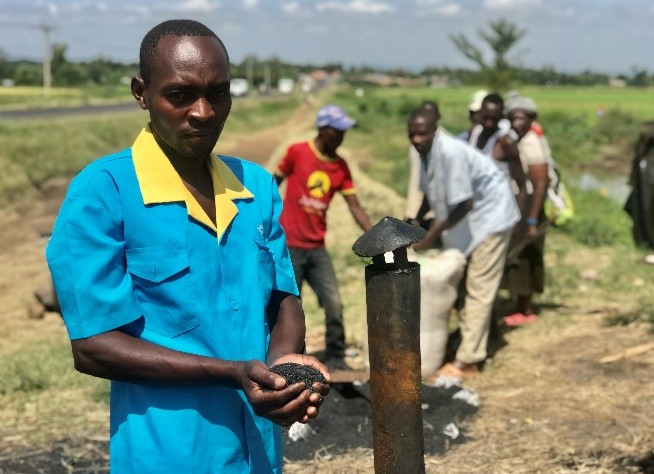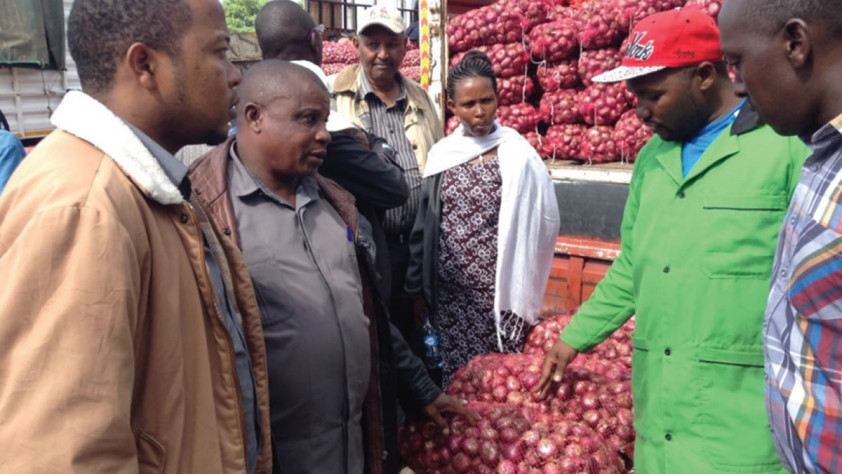Limited access to guaranteed markets is one of the priority constraints hindering smallholder farmer commercialisation and general development of agricultural value chains. Often, for countries with self-sufficiency of some agricultural commodities, national markets are not sufficient to motivate farmers to increase productivity, allocate more land to certain crop or maintain harvest quality for increased incomes. In absence of alternative markets, smallholder farmers are unable to earn decent incomes from their agricultural enterprises. The impact of limited access to markets is not only at individual farmer level, but also weakens farmer institutions such as cooperatives that bring these farmers together to benefit from economies of scale.
This is because most farmers join these cooperatives hoping to use these structures to access premium and sustainable markets, access inputs and other technologies at affordable prices, access to trainings etc. In absence of these services, there is limited royalty to these cooperatives from members, thus rendering them redundant and weak.
Critical underlying factors why farmers are unable to access reliable markets especially export markets within the region are: (i) Limited market research and market engagement (no aggressive marketing), which in most cases result in mismatch between market requirements and what is supplied, (ii) poor quality products offered on the markets due to poor pre and post-harvest handling, (iii) Limited access to trade finance to enable cooperatives aggregate produce from their members, (iv) cooperatives are run as social enterprises and not business entities etc.
Just like most of the cooperatives in Uganda and in the region, Bigando Area Cooperative was experiencing similar challenges before partnering with Regional East African Community Trade in Staples Project (REACTS-II project) in July 2018, a project implemented by Kilimo Trust and funded by Alliance for a Green Revolution in Africa (AGRA). Although the cooperative is located in a maize hub and with over 500 members, within a season the cooperative could only sell 50MT of maize because farmers didn’t bulk their produce with the cooperative as majority were not willing to wait for 3 months to be paid since the cooperative didn’t have own resources. Therefore, most of the produce was sold to middlemen at a low price. Because of the low price offered by middlemen, there was no incentive by farmers to increase productivity and maintain maize quality i.e. maize sold by farmers was characterised by high moisture content (as high as 24%), high aflatoxin levels (beyond the recommended 20pbb), brown colour, foreign matter especially stones and dust. Furthermore, some of the members abandoned the cooperative because of the way it was run and did not see any value proposition being part of the cooperative. At that time the only market that the cooperative was look at was from an International food relief agency that was supporting refugees and internally displaced people. Even then, this market was not consistent, had limitations in terms of quantities that could be supplied (maximum 150MT) and had stringent quality requirements. For the first contract, the group supplied 50MT of maize which prompted International food relief agency to increase their quota to 150MT for the second contract. However, even after aggregating the produce and fumigating it for close to 4 months on a weekly basis, the consignment was rejected on account of weevils. Farmers were disappointed by International food relief agency action, they had waited for four months, and if they had sold the grains to local buyers, we would have made some money. There was unrest among farmers, some accusing the administration of not following the requirements.
From that experience, the cooperative resolved to buy maize during the season, store and sell during off-season when prices have gone up, mainly to local buyers. At that time, there were some foreign buyers who could come in to buy maize, but they were always blocked by local buyers/traders from reaching the cooperative. While foreign buyers were buying grains at sh700, local buyers would offer sh500 or less. Farmers realised that they were making losses, at some point wanted to abandon farming.
Prior to working with Bigando ACE, Kilimo Trust had an engagement with the International food relief agency that was supporting the cooperative (through construction of the storage facility and occasionally providing market for farmers produce). The two parties agreed that Kilimo Trust needed to support the group get alternative markets since the agency was not a private sector entity and only relied on external funding to make such procurement. Thus, the arrangement was not sustainable.
Kilimo Trust identified national maize buyers, in addition to regional buyers (mainly from Kenyan who subscribe to Agro-processors Association of Kenya – APAK). After engaging these buyers, Kilimo Trust realised that Bigando had gaps in meeting buyers’ requirements (especially volumes, quality, timely delivery and consistency). The first step was to build the capacity of the cooperative and its members to grow for and supply identified markets according to buyers’ requirements. Key actions taken included training on market-oriented production, quality and EAC standards, record keeping, business skills, financial literacy and cooperative governance and management- with special focus on the new generation of cooperatives. Apart from trainings, the cooperative was supported with a grain cleaner on matching grant basis, and 28MT of maize specific fertilisers as a one-off grant under Action Africa Initiative. Once this was done, the cooperative was linked to several maize processors and aggregators from Kenya through a whatsapp platform, created by a Network of Producers and Exporters Uganda – NePEU (an association that brings together cooperatives and SMEs ready to export), with guidance from Kilimo Trust. Kilimo Trust built trust with the buyers and suppliers of produce. As such buyers first deposit money on NePEU’s or cooperative account equivalent to agreed produce volume (normally 28MT truck) which is advanced to Bigando ACE to mobilise produce within 2-3 days. This was done because buyers had confidence that the suppliers that Kilimo Trust fronted were credible. Once the produce is ready, Bigando ACE looks for return trucks to Kenya through transport brokers at Hima cement factory. Bigando ACE then connects the maize buyer with truck driver to discuss transport charges and destination of the maize in Kenya. Upon reaching an agreement on transport fare, the buyer sends transport deposit to the truck driver for fuel, maize is loaded to truck and shipped to Kenya. Clearance at the border is also handled by the buyer through known clearing agents known to the buyer.
Because of this arrangement and capacity built by Kilimo Trust, 3 months from July 2020, Bigando sold 697MT of maize compared to 50MT sold in the same period the previous year. The quality of maize has also drastically improved i.e. in fact Kasese maize is most preferred by Kenyan buyers compared to maize from other areas, reflected in willingness to pay UGX100 per Kg more than maize sourced from Mubende, even though sourcing maize from Kasese increases transport costs by UGX1.44 million compared to when they source from Mubende. Farmers are receiving between UGX50-100 more compared to what is offered by local traders and have been able to sell all their maize compared to what used to happen the previous seasons. This is the first time in cooperative history to buy maize from aggregators, who would have been their market, so as to service the Kenyan market demand – now traders are always asking cooperative managers if they have any order.
Because of this market access, unity within the cooperative has increased as farmers now realise the benefits of being part of Bigando ACE. The commission earned of UGX 20.9million (UGX30 per Kg) is helping the cooperative to extend services such as extension to its members. Most important, this opportunity has helped the cooperative realise that its needs to change its business operational model from bulking concept to turnover (investment multiplier concept), a reason for increased commission from UGX 2million to UGX 20.9million per season.
“Before the business to business engagements initiated by Kilimo Trust, the cooperative had no grain buyers. Bulking was done for between four to five months, in anticipation of a better price, only to sell at even a lower price than the purchasing price from farmers” said Jimmy Baluku, the chairperson of Bigando ACE. He added that Bigando farmers have been earning amidst the effects of COVID-19 pandemic, the cooperative now has some money that can be used for buying grains from farmers, and we are seeing more farmers joining the cooperative, that means more maize for us in the next season.


